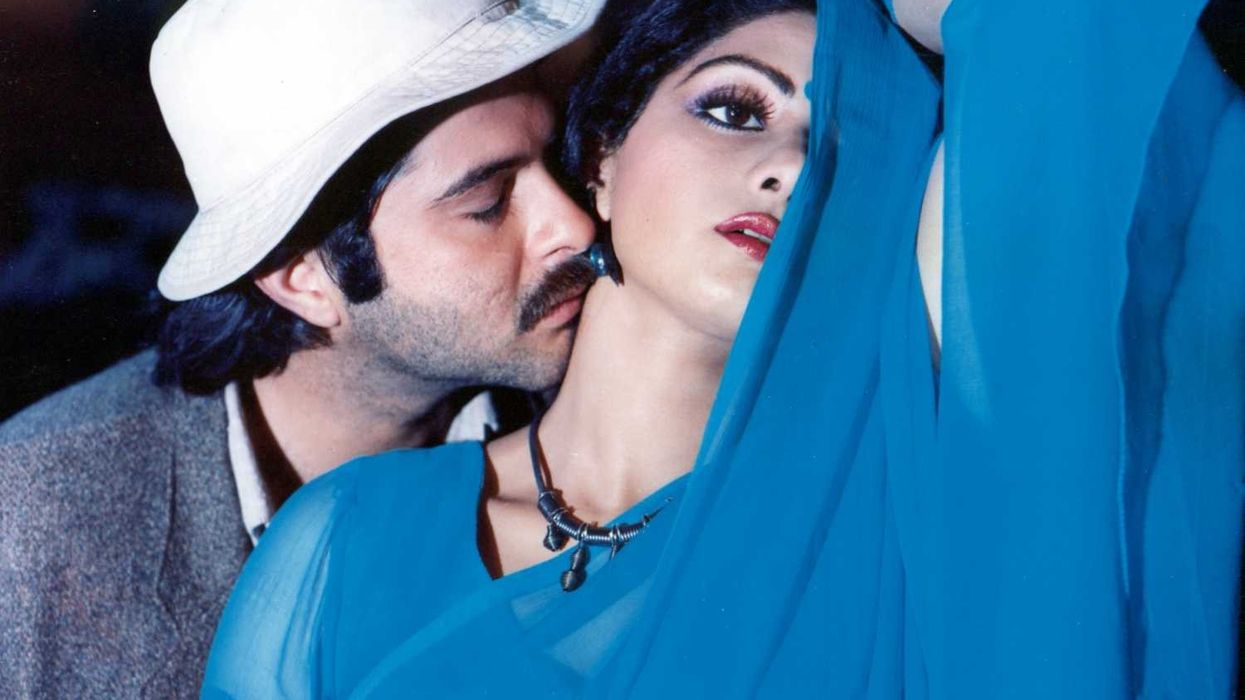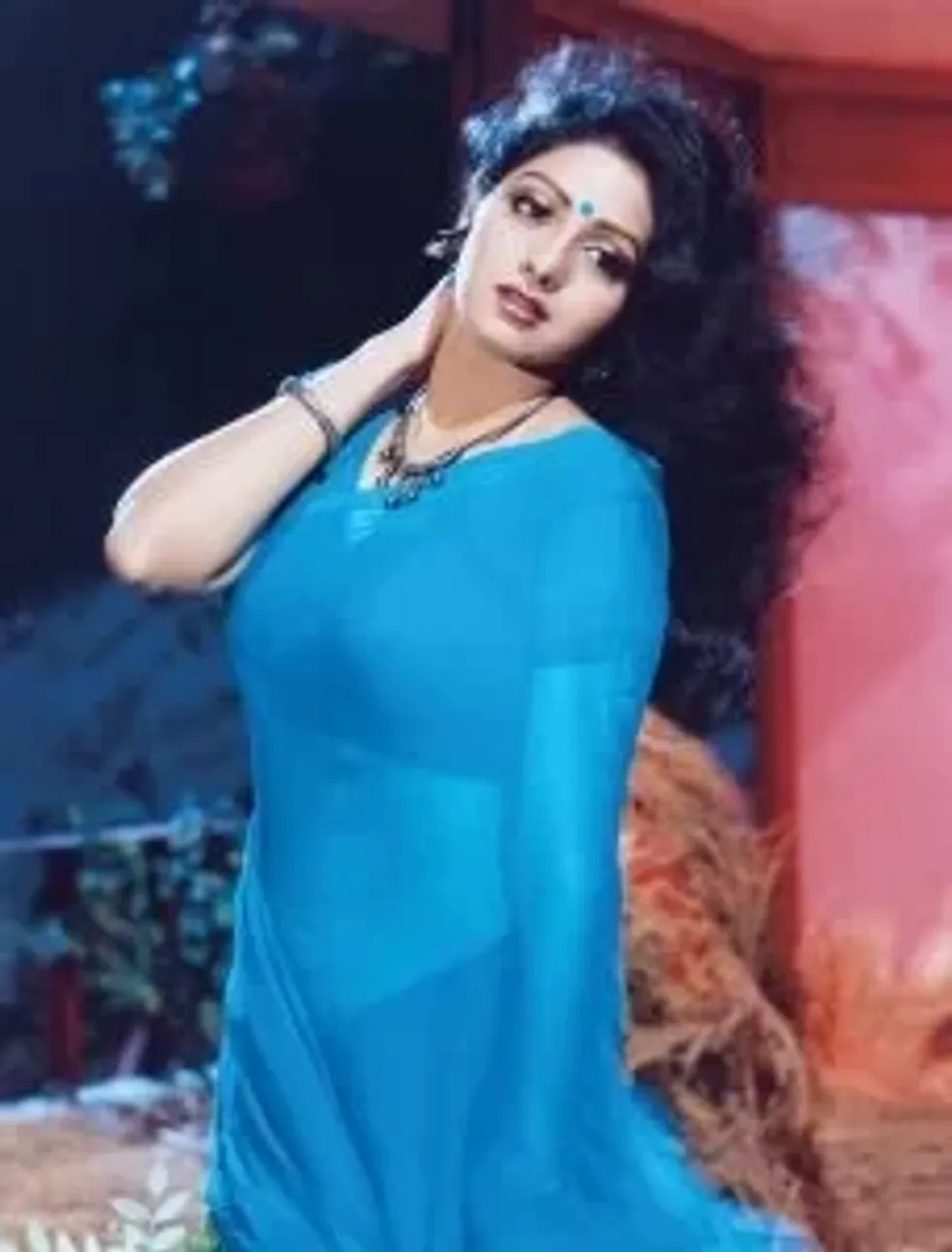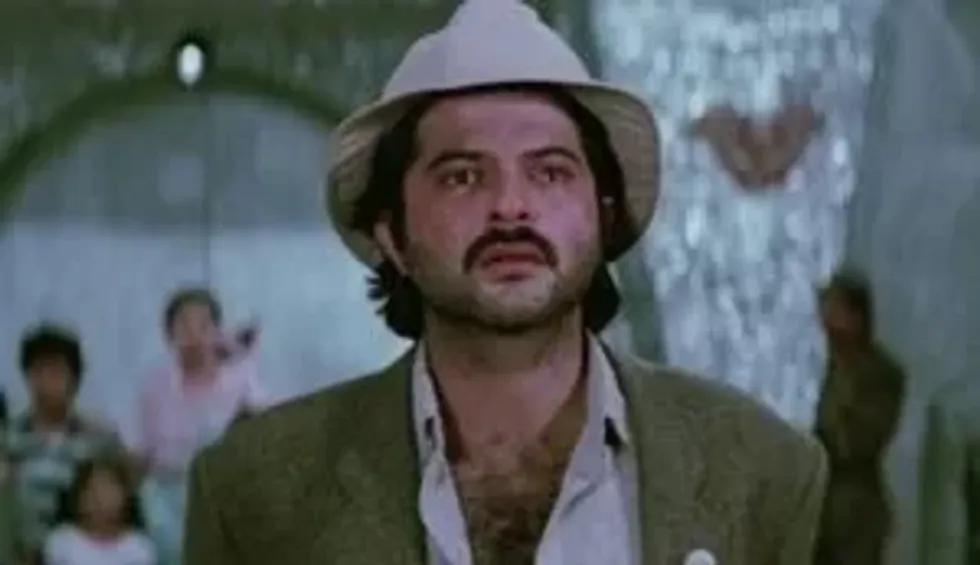ICONIC Bollywood film Mr India marks its 35th anniversary this month.
Originally released on May 29, 1987, the story about a kind-hearted man balancing looking after orphans with becoming the invisible man and battling a fearsome villain was a runaway success when it released. It also gifted audiences many memorable moments that are still revered to this day.
To mark 35 years of the heroic film, Eastern Eye decided to celebrate with 35 quick facts about the cult classic.
1. Mr India was the final collaboration between legendary writing duo Salim-Javed, who had previously delivered screenplays for all-time classics like Zanjeer (1973), Deewaar (1975), Sholay (1975), Trishul (1978), Don (1978) and Shakti (1982).
2. According to producer Boney Kapoor, the seed of the invisible man idea came to Salim-Javed when Amitabh Bachchan couldn’t attend a film launch and just his voice was played on a speaker instead.
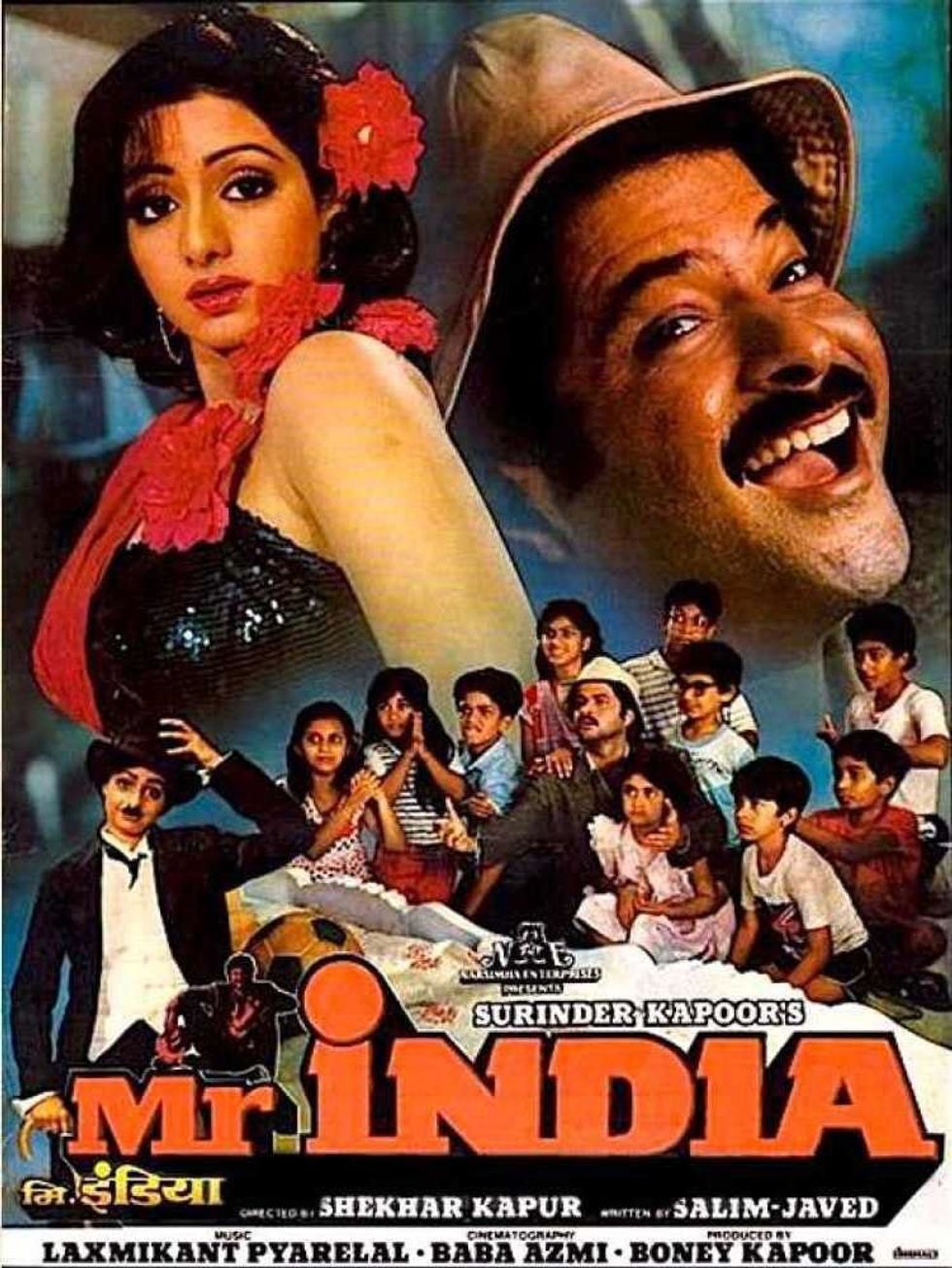
3. There are similarities between Mr India and 1971 film Elaan, which also has an invisible man.
4. Sholay director Ramesh Sippy was considered for the film, but he felt it was too expensive for a single hero film. Shekhar Kapur was brought on board to direct after his acclaimed debut Masoom (1983).
5. The film was specifically written for Rajesh Khanna, but when it was decided the actor didn’t suit the character, it was offered to Amitabh Bachchan. He turned it down and Anil Kapoor finally landed the lead role in the film.
6. Anil Kapoor revealed he added his own style to the role, so audiences wouldn’t realise it was offered to Amitabh Bachchan first.
7. Anil Kapoor pretty much wore the same outfit throughout the film. The iconic hat and jacket were apparently picked up from a local market.
8. It was the film that finally dethroned Amitabh Bachchan as the box office king and turned Anil Kapoor into Bollywood’s most bankable star at the time.
9. Producer Boney Kapoor cast Sridevi in the film and would later get married to her in 1996.
10. Sridevi was the highest paid heroine of the day and received a record-breaking amount to star in the film.
11. Although Satish Kaushik has had a distinguished career as an actor and filmmaker, he is most associated for his supporting role as the loveable cook Calendar. He also worked as an associate director on the film.
12. Ashok Kumar, who plays Professor Sinha in the movie, had starred in 1957 film Mr X, which was the first commercial Bollywood film to feature an invisible man.
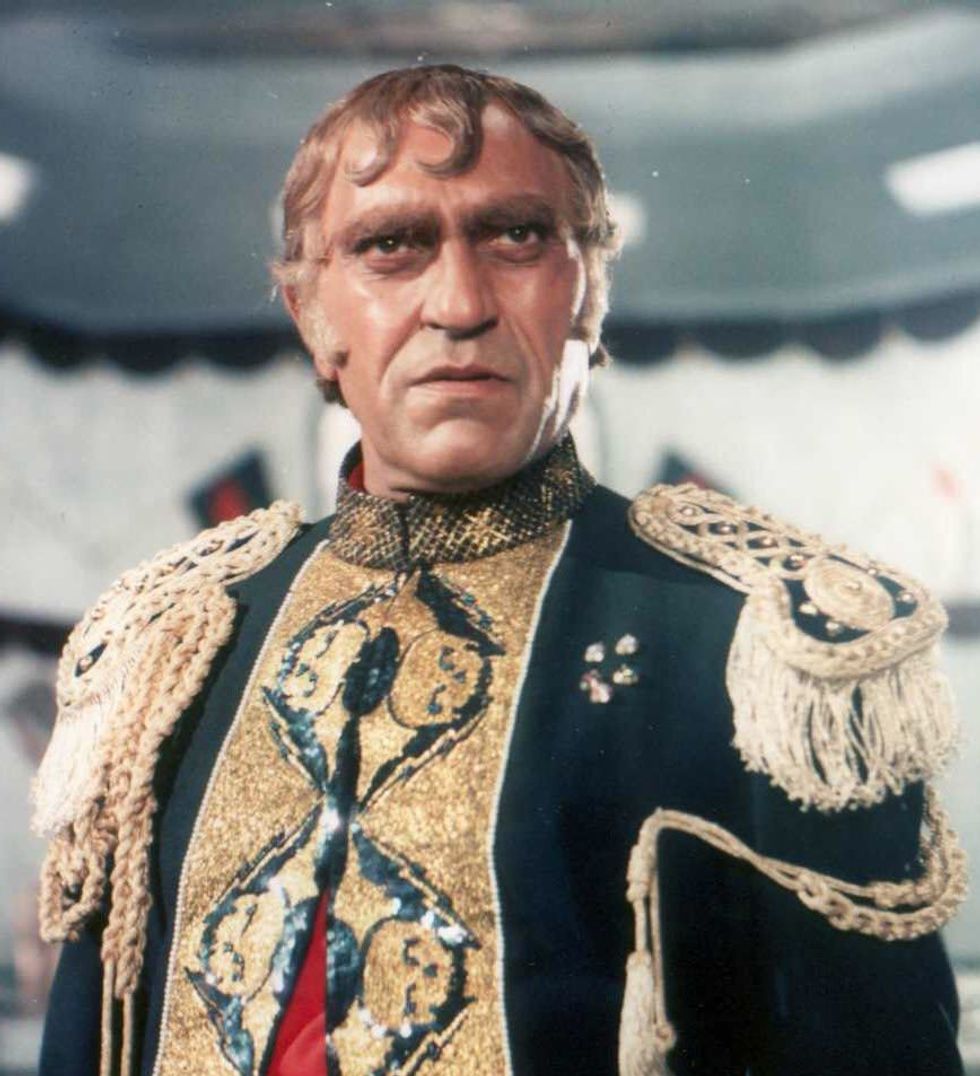
13. Anupam Kher was considered for the role of the villainous Mogambo, but Amrish Puri was cast instead because he looked more menacing and subsequently became the highest paid antagonist in Bollywood.
14. According to some historical literature, part of Mogambo’s look and mannerisms were inspired by Adolf Hitler and then Pakistani president Zia-ul-Haq.
15. Mogambo is seen as the second-most iconic villain in Indian cinema after Gabbar Singh in Sholay. His dialogue ‘Mogambo khush hua’ is regarded as one of the most memorable in Hindi film history.
16. Actor Aftab Shivdasani made his Bollywood debut as a child actor in the movie.
17. Choreographer turned director Ahmed Khan also made his cinema debut as a child actor in the film.
18. Ajay Devgn’s father Veeru Devgan was the action director on Mr India.
19. Although she had recorded a number of songs, pop icon Alisha Chinai first came to global prominence with the film’s song Kate Nahin Kat Te.
20. Saroj Khan once said that Kate Nahin Kat Te was one of the most difficult songs to choreograph because it was more about sensuous movements than dancing.
22. There is an opening dedication to late actress Geeta Bali, who had coincidentally starred in a 1961 film titled Mr India and tragically passed away in 1965, aged just 35.
23. Look carefully at the blackboard in the background of Ashok Kumar’s opening scene and you will notice a scientific formula is named as Boney’s Law (named after the film’s producer Boney Kapoor).
24. Mr India was the second-highest-grossing film of 1987, behind long-forgotten action film Hukumat.
25. This would be the last commercial Bollywood film Shekhar Kapur would officially direct. (But he did start and abandon a number of Bollywood projects after
the success of Mr India, including Joshilaay (1989), Roop Ki Rani Choron Ka Raja
(1993) and an aborted remake of Back To The Future).
26. Mr India was a frontrunner to win big at the Filmfare Awards, but no ceremony was held that year. Sridevi would later be given a special award for the film in 2013.
28. In 1989, the film was remade in Tamil (En Rathathin Rathame) and Kannada (Jai Karnataka).
29. Anil Kapoor plays Arun Verma in Mr India and would use the same character name in 1998 comedy Gharwali Baharwali.
30. Producer Boney wanted to make a 3D sequel, but then permanently shelved the idea when Sridevi passed away.
31. Director Kunal Kohli once claimed to have watched the film 200 times.
32. In 2019, Madame Tussaud’s in Singapore unveiled a wax statue of Sridevi in her golden Hawa Hawaii look from the film’s song.
33. British rapper Riz Ahmed’s second studio album The Long Goodbye has a track titled Mogambo, which was inspired by the film’s character.
34. Sridevi once said that Mr India couldn’t be remade, but that isn’t stopping director Ali Abbas Zafar from planning a new version, which he said will be a brand-new modern-day interpretation and part of a potential trilogy.
35. Several international film festivals have screened Mr India, which has been named in pretty much every 100 greatest Bollywood film list published in the last few decades.
And we give the film a big salute on its 35th anniversary.
